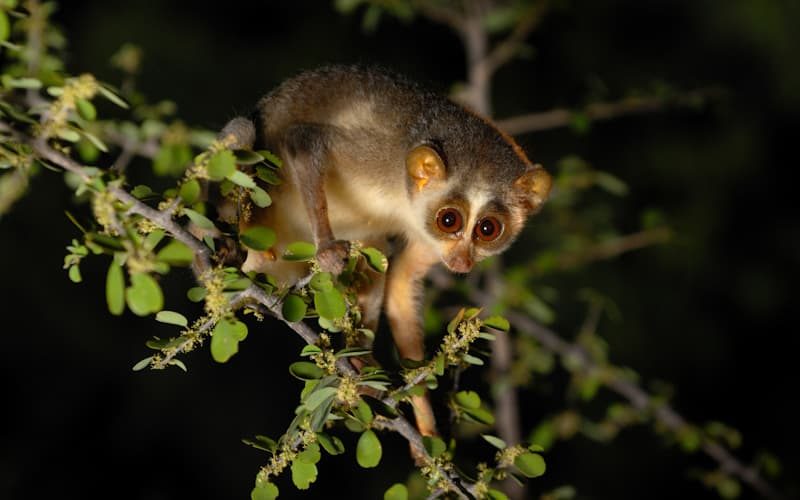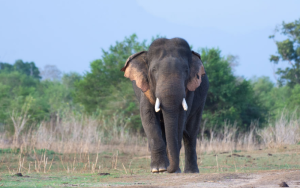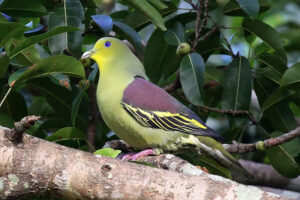About Gray Slender Loris
The Loridae family includes the gray slender loris (Loris lydekkerianus), a monkey species. Subtropical and tropical dry woods and subtropical or tropical moist lowland forests are home to this species, which is native to India and Sri Lanka. Habitat loss is a hazard to this species.
Taxonomy
Loridae, which includes both the red and gray varieties, is the family of Lorisidae, which includes both the red and gray varieties of the Lorisidae. In honor of English naturalist Richard Lydekker, Spanish biologist ngel Cabrera first described the Mysore slim loris (Loris tardigradus lydekkerianus) in Chennai, India, in 1908. In his important primate work, Primates: Comparative Anatomy and Taxonomy, William Charles Osman Hill further characterized this subspecies (1953). Hill believed that there were six subspecies of slender loris, two in India and four in Sri Lanka, which were further subdivided into two subspecies each. There are two species of tardigradus, L. lydekkerianus and L. tardigradus, recognized in 1998 by biological anthropologist Colin Groves. Subspecies of Loris lydekkerianus are currently divided into four distinct geographic regions: India (L. l. t. lydekkerianus) and Malabaricus in India, Nordicus in Sri Lanka, and Grandis in the island nation of Sri Lanka (formerly L. t. grandis).
Genus Loris
- Red slender loris, Loris tardigradus
- Gray slender loris, Loris lydekkerianus
- Malabar slender loris, Loris lydekkerianus malabaricus
- Mysore slender loris, Loris lydekkerianus lydekkerianus
- Northern Ceylonese slender loris, Loris lydekkerianus nordicus
- Highland slender loris, Loris lydekkerianus grandis
It has been difficult to categorize the montane slender loris (taxon nycticeboides) because it has been categorized as either a subspecies of L. lydekkerianus, L. tardigradus, or even a different species. An analysis of incomplete CO1 sequences in 2019 demonstrated that the taxon can be grouped with L. t. tardigradus in a single haplogroup
Physical Description of Gray Slender Loris
Slender lorises are known for their incredibly gracile limbs and their ability to see in all directions at the same time. Gray slender loris subspecies can be recognized by their pelage color variation. Occasionally, a darker stripe extends from the top of their heads to the end of their backs, which is gray or reddish. White or buff-colored, the ventrum is. Primate primates’ eyes are surrounded by darker fur and have orbits that stare straight forward, providing exceptional stereoscopic vision. The median stripe is a white band of hair that appears between the eyes. The red slender loris’s muzzle is shorter and blunter than this one. Hands have been specially designed to help the Loris to grip onto little branches with ease. The first metatarsal is supposed to have adaptations that allow for an extraordinarily tight grip. Vestigial is a better word for the tail. The average head-to-body length is between 18 and 26 centimeters (7.1 and 10.2 inches).
Loris lydekkerianus grandis, the Sri Lankan subspecies, has a heart-shaped face and small ears. Loris lydekkerianus grandis has black basal hairs, whereas Loris lydekkerianus nordicus has white basal hairs.
Slender lorises are known for their incredibly gracile limbs and their ability to see in all directions at the same time. Loris lydekkerianus grandis, the Sri Lankan subspecies, has a heart-shaped face and small ears. The median stripe is a white band of hair that appears between the eyes.

Behaviour of Gray Slender Loris
Despite the comparatively significant number of research conducted throughout the 2000s, the gray slender loris’s behavior is among the least understood of all the primates studied. They are nocturnal, like all other lorises, and only emerge from their roost chambers at the end of the day. They are primarily insectivorous in nature. Although they prey mostly on insects, they will also consume fruit and flowers as well as small mammals such as mice and geckos if given the opportunity. When it comes to southern India, the nominate race is frequently found in acacia and tamarind-dominated woodlands or scrubs close to agricultural fields and fields. Males tend to have wider home ranges than females, which makes sense. Foraging in groups or pairs is uncommon, and they are most often spotted on their own when they are not in a group. They may, however, roost in groups of up to seven individuals, which may contain young from both recent and older litters. In adulthood, adult males and females have their own home ranges, and sleeping group relationships are often made up of a female and her young. Use a variety of vocalizations to communicate, as well as urine and smell marking, to get your message through. Aside from that, olfactory and optical signaling at a minimum distance of 20m is required. During the day, lorises sleep in groups and communicate with one another throughout the night. Other than their moms and daughters, ladies who have exclusive home ranges are rarely seen interacting with other females. Females who are in the same sleeping space as a man are more likely to be linked with that male. Males are more aggressive toward other males who are not affiliated with their sleeping location than they are toward other females. Males who are present in the sleeping area, on the other hand, have a pleasant interaction with them. The males also tend to any infants that may be present in the sleeping area, and sleeping arrangements are the only form of social interaction that lorises engage in.
Gray slender loris’s behavior is among the least understood of all the primates studied. Adult males and females have their own home ranges, and sleeping group relationships are often made up of a female and her young. During the day, lorises sleep in groups and communicate with one another throughout the night

Reproduction
Lorises have been discovered to be promiscuous, with numerous males competing for the attention of a single female during mating season. Mating takes place twice a year, in April and June, and in October and December. Despite the fact that lorises mate twice a year, they can only reproduce once a year. One estrus cycle will fail, and a new one will begin around 2 weeks after it has failed. The duration of pregnancy is around 170 days. Lorises have a high incidence of having twins. It is the reproductive tract and the ovarian cycle that are representative of the general mammalian plans. Four teats form and begin to produce milk before the baby is delivered, indicating that the mother is lactating. Females are non-receptive to males for a period of time after giving birth and are responsible for their kids. The slender loris has one of the lowest reproductive rates of any primate weighing less than 500 grams.
The slender loris has one of the lowest reproductive rates of any primate weighing less than 500 grams. Mating takes place twice a year, in April and June, and in October and December. Lorises have a high incidence of having twins as they can only reproduce once a year.

Geographic Range and Habitat
The gray slender loris may be found in southern India and Sri Lanka, where it can be found in primary and secondary rainforests, dry semi-deciduous forests, and montane cloud forests at elevations of up to 2,000 meters (6,600 feet). It can be found in southwestern India, roughly between the Tapti and Godavari Rivers, and all the way down to the southern coast of the subcontinent. It is a tropical rainforest. Geographical separation exists between the subspecies. The Malabar gray slender loris is found in the wet woods of the Western Ghats in the southern Indian states of Karnataka, Kerala, and Tamil Nadu, where it can be found up to an elevation of 1,200 meters in the Malabar region (3,900 ft). At altitudes ranging from 300–500 meters (980–1,640 feet), the Mysore gray slender loris can be found in the tropical dry forests of the Eastern Ghats in the Indian states of Andhra Pradesh, Karnataka, and Tamil Nadu, where it prefers open Euphorbia scrub woods and Acacia trees. It can also be found in the dry eastern slopes of the Western Ghats, where it thrives in the arid climate.
The gray slender loris may be found in southern India and Sri Lanka. It can be found between the Tapti and Godavari Rivers, and all the way down to the southern coast of the subcontinent. Geographical separation exists between the subspecies. It can be found in south-western India, roughly between the Tapti and Godavari Rivers, and all the way down to the southern coast of the subcontinent.
Conclusion
In conclusion, the Gray Slender Loris is a unique and rare primate species found in Sri Lanka that holds significant ecological and cultural value. With its distinct physical features and nocturnal behavior, the Gray Slender Loris is a fascinating animal to observe and study.
However, the population of these primates is threatened by habitat loss, human encroachment, and hunting. It is crucial to implement conservation efforts to protect these endangered primates and their habitats, such as creating protected areas, promoting responsible tourism, and implementing sustainable development practices.
As responsible travelers, we can play a critical role in conserving the Gray Slender Loris and its habitat by supporting sustainable tourism initiatives that prioritize the protection of these primates and their natural environment. By doing so, we can ensure that future generations can continue to appreciate the beauty and significance of the Gray Slender Loris in Sri Lanka.











